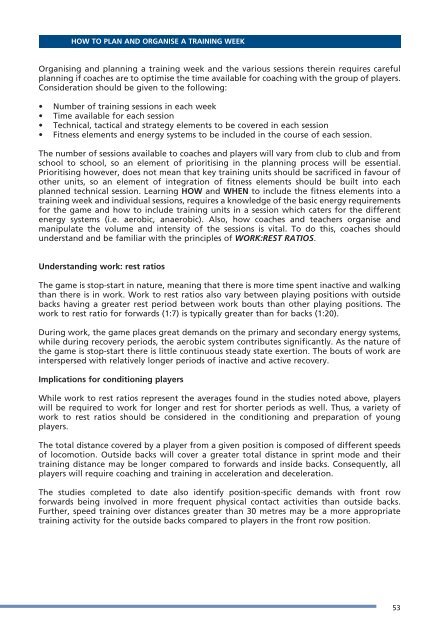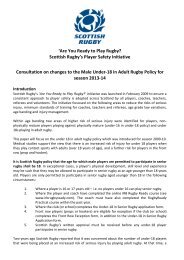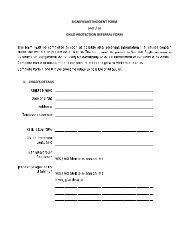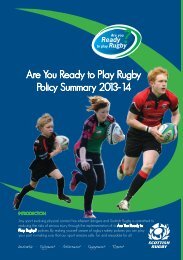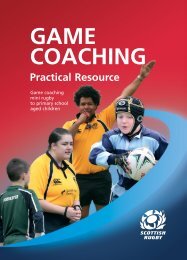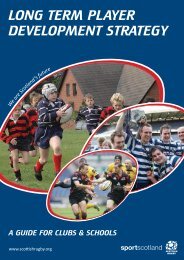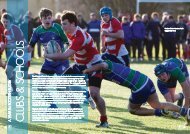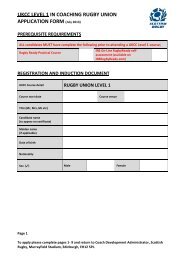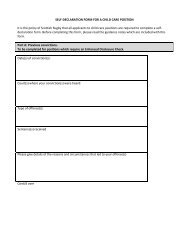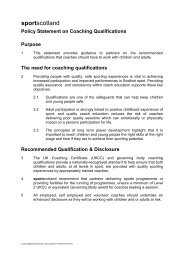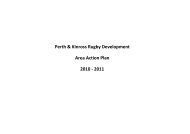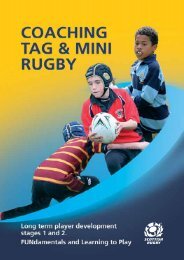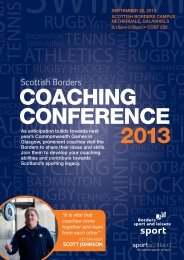LTPDst3cover.qxd (Page 1) - Scottish Rugby Union
LTPDst3cover.qxd (Page 1) - Scottish Rugby Union
LTPDst3cover.qxd (Page 1) - Scottish Rugby Union
- No tags were found...
You also want an ePaper? Increase the reach of your titles
YUMPU automatically turns print PDFs into web optimized ePapers that Google loves.
HOW TO PLAN AND ORGANISE A TRAINING WEEKOrganising and planning a training week and the various sessions therein requires carefulplanning if coaches are to optimise the time available for coaching with the group of players.Consideration should be given to the following:• Number of training sessions in each week• Time available for each session• Technical, tactical and strategy elements to be covered in each session• Fitness elements and energy systems to be included in the course of each session.The number of sessions available to coaches and players will vary from club to club and fromschool to school, so an element of prioritising in the planning process will be essential.Prioritising however, does not mean that key training units should be sacrificed in favour ofother units, so an element of integration of fitness elements should be built into eachplanned technical session. Learning HOW and WHEN to include the fitness elements into atraining week and individual sessions, requires a knowledge of the basic energy requirementsfor the game and how to include training units in a session which caters for the differentenergy systems (i.e. aerobic, anaerobic). Also, how coaches and teachers organise andmanipulate the volume and intensity of the sessions is vital. To do this, coaches shouldunderstand and be familiar with the principles of WORK:REST RATIOS.Understanding work: rest ratiosThe game is stop-start in nature, meaning that there is more time spent inactive and walkingthan there is in work. Work to rest ratios also vary between playing positions with outsidebacks having a greater rest period between work bouts than other playing positions. Thework to rest ratio for forwards (1:7) is typically greater than for backs (1:20).During work, the game places great demands on the primary and secondary energy systems,while during recovery periods, the aerobic system contributes significantly. As the nature ofthe game is stop-start there is little continuous steady state exertion. The bouts of work areinterspersed with relatively longer periods of inactive and active recovery.Implications for conditioning playersWhile work to rest ratios represent the averages found in the studies noted above, playerswill be required to work for longer and rest for shorter periods as well. Thus, a variety ofwork to rest ratios should be considered in the conditioning and preparation of youngplayers.The total distance covered by a player from a given position is composed of different speedsof locomotion. Outside backs will cover a greater total distance in sprint mode and theirtraining distance may be longer compared to forwards and inside backs. Consequently, allplayers will require coaching and training in acceleration and deceleration.The studies completed to date also identify position-specific demands with front rowforwards being involved in more frequent physical contact activities than outside backs.Further, speed training over distances greater than 30 metres may be a more appropriatetraining activity for the outside backs compared to players in the front row position.53


